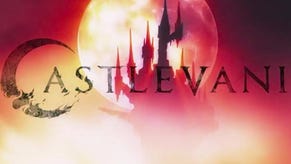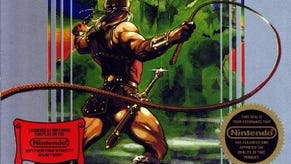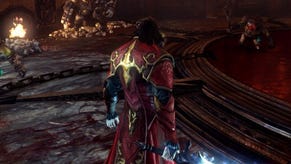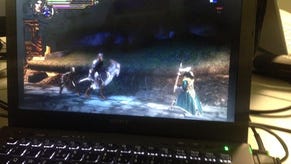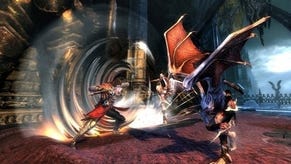Face-Off: Castlevania: Lords of Shadow
Platform parity?
| - | Xbox 360 | PlayStation 3 |
|---|---|---|
| Disc Size | 6.5GB (disc one), 6.1GB (disc two) | 11.9GB |
| Install | 6.5GB (disc one), 6.1GB (disc two) | - |
| Surround Support | Dolby Digital | Dolby Digital, 7.1LPCM, 5.1LPCM, DTS |
There's something of an aura - a level of profound expectation - surrounding Castlevania: Lords of Shadow. Maybe because it's been so long since the last truly classic game in the series. Perhaps because the pre-release trailers and screenshots have looked so pretty, and the game features some seriously impressive engine tech. Or maybe it's the curiosity factor of a Western developer taking on the epoch-making series under the watchful eye of Kojima Productions.
More pertinently for this feature, this is a cross-platform project where Konami and developer Mercury Steam haven't been afraid to use the strengths of the PlayStation 3. The game ships on one Blu-ray disc, but requires two DVDs to get the job done on Xbox 360. Producer Dave Cox is on the record as saying that PS3 is the lead platform for Castlevania, but also promises the game will be "identical" on the 360. Now's the time to put these claims to the test.
Let's get straight onto the initial comparison. As per the norm, there's a well-stocked 720p comparison gallery to mull over, and of course the requisite head-to-head video.
All of our split-screen vids are hand-encoded directly from the lossless source to ensure optimum quality, but Castlevania gave us real headaches. The game is so detail-rich that even the x264 compressor has real issues in retaining quality in a streaming video without the bandwidth requirement going stratospheric. We had to slow the video down to one-third speed, and really go to town on the encoding itself to get the full quality retained in the final presentation. Hopefully the effort has been worth it.
Retaining as much of the detail as possible is a must for a couple of reasons. First of all, if you've not played the demo, you've really got to see it to believe it. Even if you're not particularly interested in the comparison aspect, we really want to showcase the quality of the visuals being pumped out by this engine.
Secondly, hopefully the video will accurately represent the stunning quality of the cross-platform achievement: it really is exceptionally close between both platforms and we wanted to make sure that every pixel was represented, so be sure to use the full-screen button to get full HD resolution.
Castlevania: Lords of Shadow operates at native 720p on both systems, but neither uses any anti-aliasing. This level of parity extends to all aspects of the game's visual make-up: lighting is effectively identical, shadowing is exactly like-for-like right down to the filtering technique used, and the texture quality and filtering are the same.
Developer Mercury Steam appears to have opted for a zero-compromise approach to its work here: it's basically impossible to find fault with either version as they truly are almost completely identical. The fact that the team has managed to achieve this while creating an engine technology that is state of the art in so many ways is even more impressive, and that's something we hope to look at in more depth in the near future.

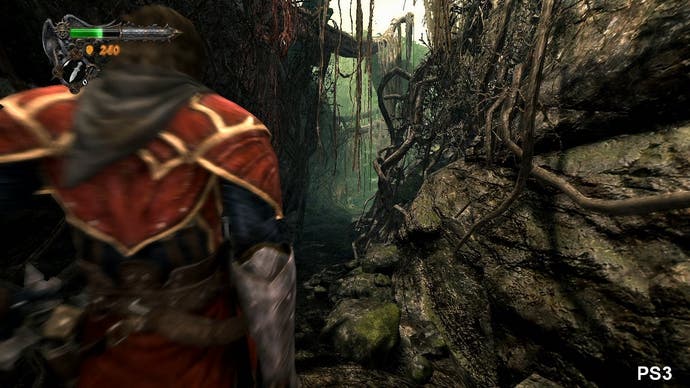


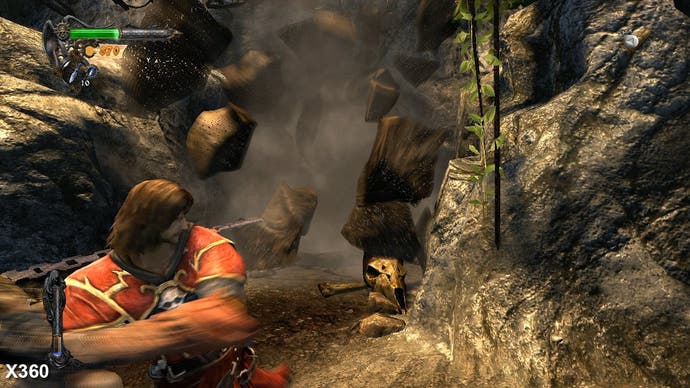
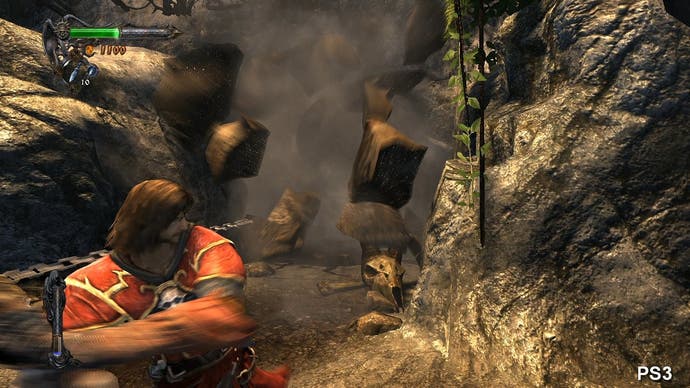
Happy that the game looks the same, the next set of tests are all about performance. If you've played the Lords of Shadow demo you'll know that the game has a somewhat changeable frame-rate. Our initial impression was that the PS3 demo offered marginally superior performance compared to its 360 sibling, but more prolonged testing with the full game was required.
First up, we stress-test the game tech by comparing a range of engine-driven cut-scenes - these seem to feature a wildly variable frame-rate so it would curious to see how the tech manages to perform on both platforms when asked to produce exactly the same visuals.
The results are intriguing, and somewhat unique. It's usually the case that even in the best cross-platform projects there are specific effects, levels or scenarios that favour one console's architecture over the other's. What we find in Castlevania is something different - almost identical frame-rate graph lines, with almost equal variances in the same scenes at the same times. Where the readouts do separate it is without exception in favour of the PS3 version of the game.
It's also apparent that Mercury Steam values image integrity, because Castlevania: Lords of Shadow is completely v-synced on both platforms, without a single torn frame in sight. On the one hand, when you have visuals on the level that the developer has achieved here, you don't really want to see them blighted with screen-tear. On the other, you do have to wonder if running with a soft v-sync could have produced a smoother look - there's no doubt that Castlevania is often noticeably jerky, and not just in the cut-scenes.
Frame-rate in these cut-scenes is somewhat variable to say the least, and it's clear that Mercury Steam pushed the visuals to the limit often at the expense of frame-rate (15FPS at certain points is something we never like to see in-game). So next up we took a series of like-for-like gameplay scenes from the first couple chapters, and compared overall performance levels.
We don't see the same extreme performance lows in actual gameplay that we occasionally find in the cut-scenes, but the shifting frame-rate is still a problem - changing between anything from the low 20s to the low 30s. There doesn't seem to be any kind of frame-rate capping going on with either platform, but any journeys above the usual 30FPS console threshold are few and far between, although there is a nice section in chapter four where frame-rate goes through the roof in comparison to the rest of the game.




